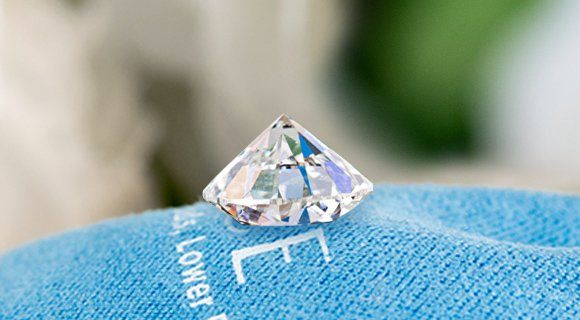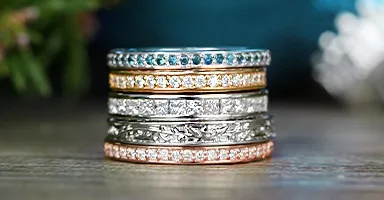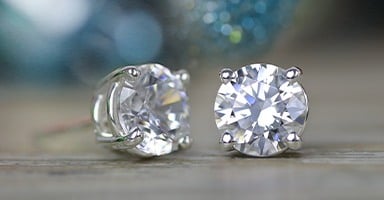Diamond Culet
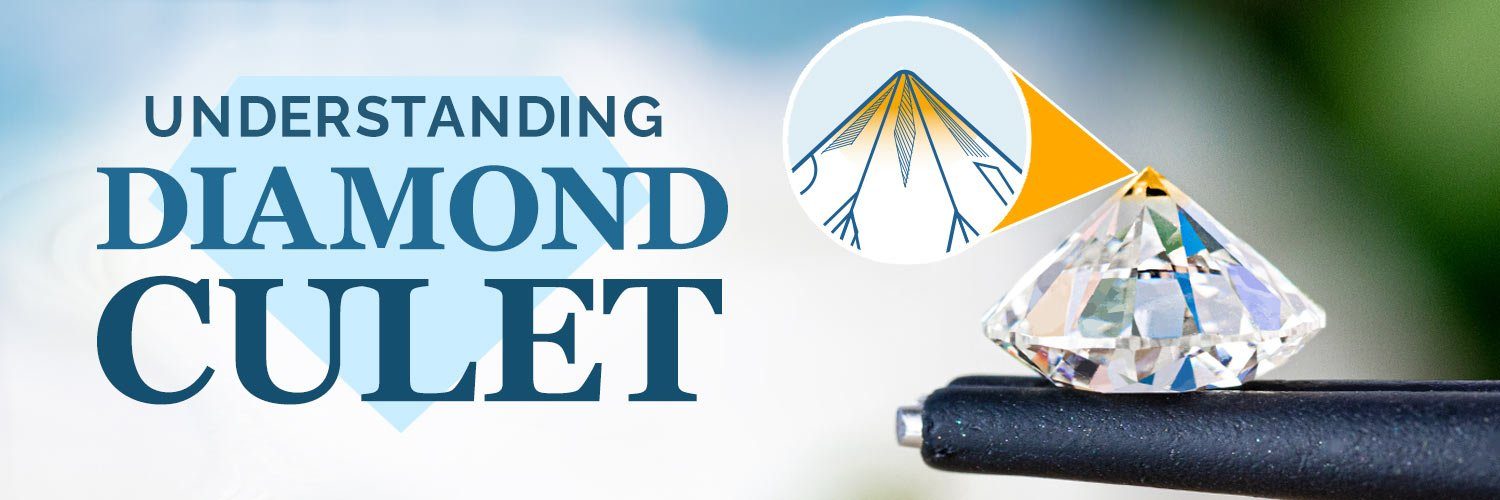
The culet (pronounced kyoo-lit) of a diamond is the tiny point at the base of the pavilion, where the facets of the pavilion meet. In the majority of diamonds, the pavilion facets are uniformly cut at the proper angle and meet at a perfect point, yielding no culet (sometimes called a pointed culet). When the pavilion facets do not meet at a point, the culet is a rough or polished facet. The presence of a culet adds an additional facet to the diamond's total number of facets, while a pointed culet does not. For example, a brilliant round diamond with a faceted culet has 58 facets, while a diamond with a pointed culet has 57 facets.

Rating Diamond Culet
The culet is rated from None to Extremely Large. When a loose diamond is sent for certification, the diamond is viewed face up to determine the culet's size, and from the side to determine the culet's angle. A sharply angled culet is no longer assessed as a culet, but as an extra facet.
For certified diamonds with culets within the range of Small to Extremely Large, culet size can also be expressed as a percentage relative to the diameter of the diamond, measuring from about 1.5% to 15%.

Culet Ratings
Below are the standard ratings that may be applied as a description of a diamond's culet:
- None (Pointed), Very Small, Small: Ideal; care should be taken when setting stone
- Medium: Very Good; protected against chipping but not ideal visually
- Slightly Large, Large: May affect appearance of diamond
- Very Large: Will usually affect appearance of diamond
- Extremely Large: Highly visible and will affect appearance of diamond
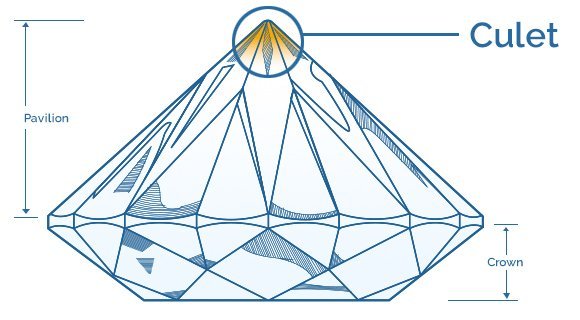
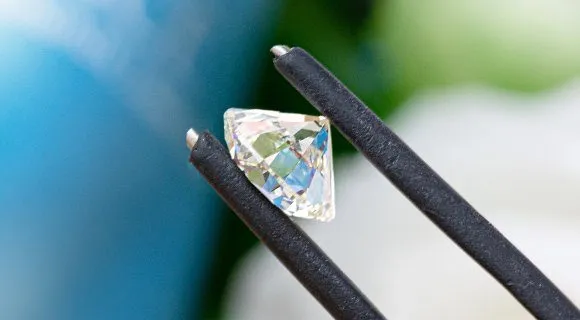
The Effect of a Diamond's Culet
Although they were commonly used in Old European Cut and Old Miner's Cut diamonds a century ago, large culets are not desirable by modern cutting standards because they are visible through the table facet when the diamond is viewed from above. A large, very large, or extremely large culet acts like a window parallel to the table of the diamond, allowing light to escape through the bottom and making the culet appear as a dark circle. Although the absence of a culet is most desirable, a diamond with a small or medium-sized culet will appear to have a point at the base of the pavilion, and will perfectly reflect the light that passes through the stone.
However, a pointed culet has a very slight risk of chipping while setting or being worn, so it is crucial to secure the diamond in a protective setting to minimize contact with hard or abrasive surfaces. A high setting will also help to prevent contact with the metal or the finger. Some diamond cutters intentionally cut a small culet to minimize the risk of chipping.
Guidance & Advice: Diamond Culet
Unless you're looking for an antique setting and prefer an older style diamond cut, choose a stone with a small culet or none at all, as this will display the diamond's fire and brilliance to the best effect.
Diamond culet is important because it can affect the appearance of a diamond when viewed from above. Additionally, the culet is a diamond's weakest point, and it is advisable not to touch the culet of a loose diamond.
